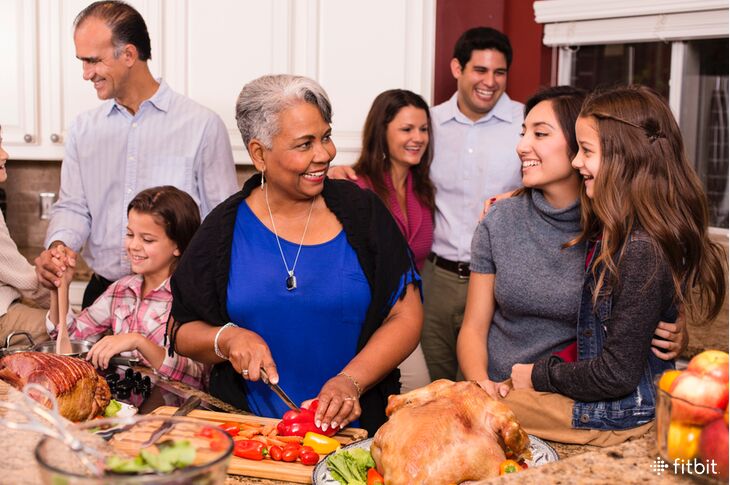
For most Americans, November is the time for turkey, football, and pumpkin spice everything. But it’s also National Diabetes Month, a time to spread awareness about the disease, which, in 2015, affected over 30 million people in the U.S.
While there are a few different kinds of diabetes, all involve a problem with the body’s ability to produce or use insulin well. Insulin is a hormone produced by the pancreas that helps the body’s cells use glucose (sugar) for energy. When there’s not enough—or any—insulin available, glucose stays in the blood and can cause serious health problems. No matter the form diabetes takes, experts agree that food and lifestyle factors are essential for helping to maintain overall health.
“It’s important to find a lifestyle that can help improve the lipid [cholesterol] profile, blood pressure, and blood sugar,” says Malcolm Thaler, MD, a New York-based physician. “All of these goals can help be managed by a lifestyle that incorporates weight loss, healthy nutrition, and exercise.”
If you’re thinking, “Wait a minute! Those sound like great goals for almost anyone,” then you’re right. “There’s no such thing as a ‘diabetic diet,” says Tracy Morris, an accredited dietetic professional and nutrition curriculum designer at Fitbit. “But luckily, a diabetes-friendly meal is one that’s good for everyone!”
And a diabetes-friendly Thanksgiving is possible, even if the thought of subjecting traditional relatives to nutritious dishes and light exercise seems daunting. Here are four simple ways to make this Thanksgiving happier and healthier for the whole family:
1. Make Smart Carbohydrate Choices
“One of the most important steps is to avoid the traditional plate overflowing with processed ‘white’ carbs like stuffing, cornbread, dinner rolls, and mashed potatoes,” says Morris. “This will only send your blood sugar level soaring—not to mention put the whole family into a post-meal slumber! Instead, go for one small serving of a healthier carb choice, like corn on the cob, mashed sweet potato, or dressing stuffed with mostly veggies not just white bread and butter.”
2. Load Up On Fiber
“Fiber slows down your body’s ability to convert food to sugar,” explains Bay Area-based nutritionist Karyn Forsyth Duggan. “And when you have lots of fiber, you fill up more quickly.”
High-fiber foods may sound less than celebratory, but take heart: all kinds of delicious fruits, vegetables, whole grains, nuts, and beans are chock-full of the stuff. “Aim to get as much color on your plate as you can from fresh leafy salads and roasted low-starch veggies, like peppers, zucchini, onions, and artichokes,” says Morris.
3. Skip Fake Foods and Reach for The Real Deal
“For my patients with type-2 diabetes, I recommend that they eat real, whole foods,” says Thaler. “[They] shouldn’t lean on so-called ‘diet foods’ or supplements, as these have not been shown to be beneficial and may prove harmful in other ways,” he adds, noting that many contain potentially harmful chemicals or too much salt.
But according to nutrition experts, everyone should opt to go natural. “Here’s the bottom line with the fake stuff: your body doesn’t understand it,” says Duggan. “As soon as you have processed sweets, it primes you to want more. You’ll also probably have gastrointestinal issues because your body won’t recognize it—just say no.”
Sage wisdom, but how can you please a table full of sugar-hungry diners? “Berry-based desserts, served with a dollop of Greek yogurt, come loaded with fiber, are much lower in sugar, and even the kids will gobble them up,” says Morris.
4. Add Some Light Activity
Sure, the main event is usually a sit-down feast, but there’s no reason the family can’t get out for a brisk walk or a friendly game of touch football. Physical activity has been shown to help boost the body’s sensitivity to insulin, which further helps keep blood sugar levels under control. Not to mention, exercise can help improve sleep, boost your metabolism, strengthen your mind, and more.
“I think unfortunately a lot of people stress so much,” Duggan says of the holiday. “Just chill out and know you can still enjoy your meal and even enjoy it much more by making some healthier choices.”
The post How to Have a Diabetes-Friendly Thanksgiving Day for the Whole Family appeared first on Fitbit Blog.
Source: Fitbit Blog
—